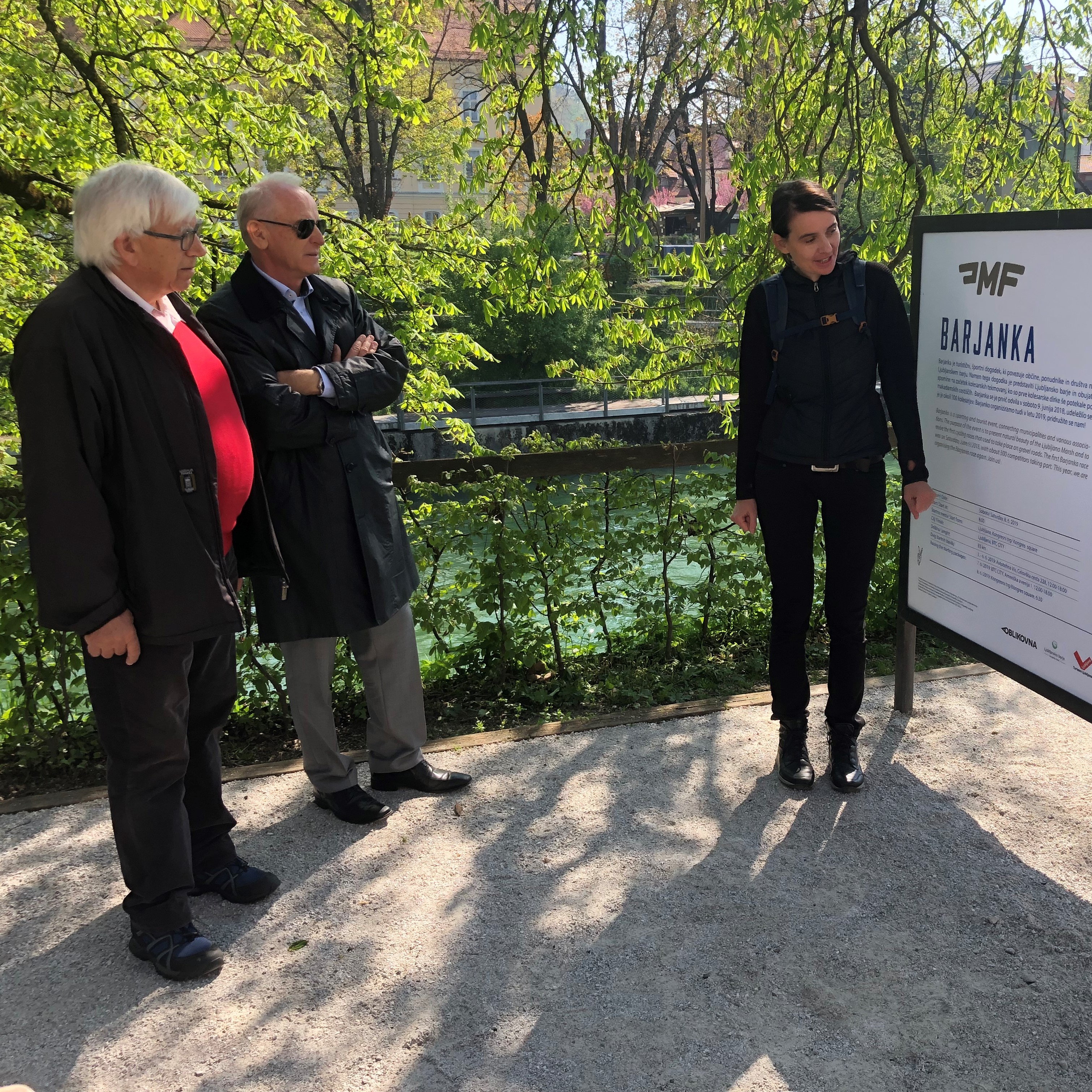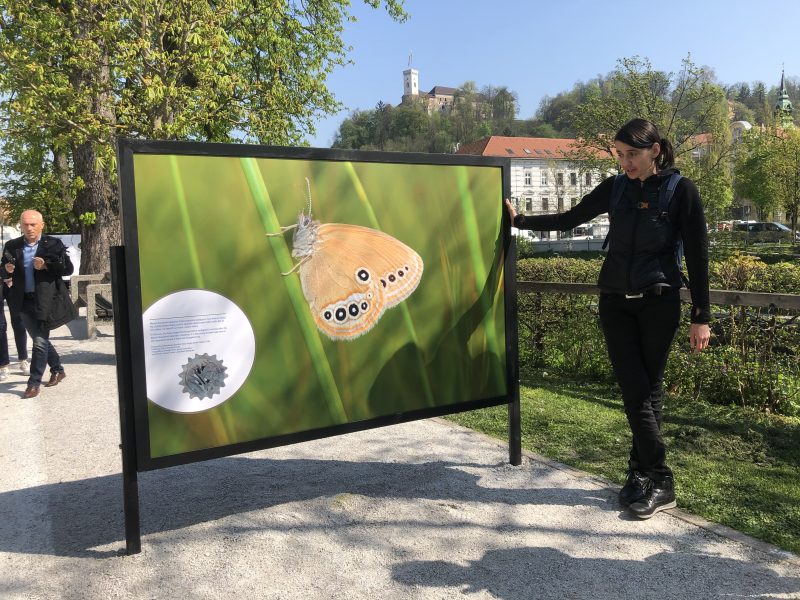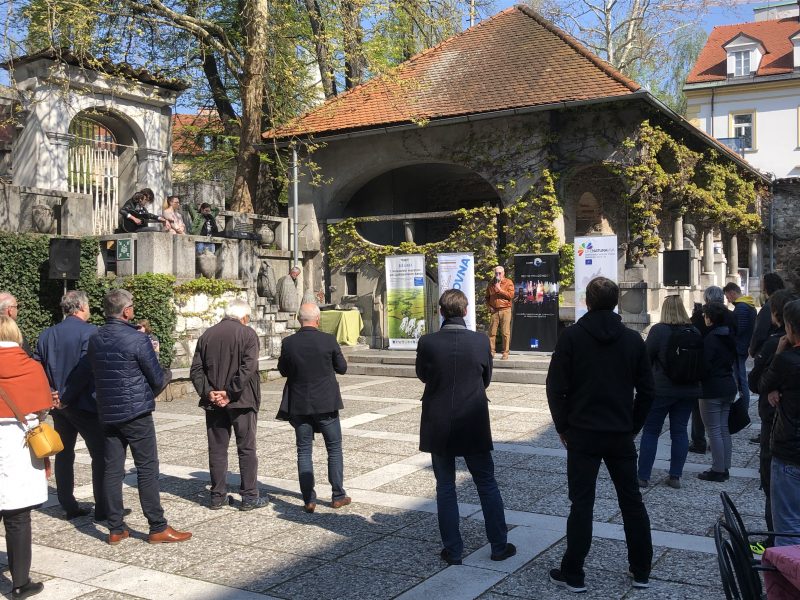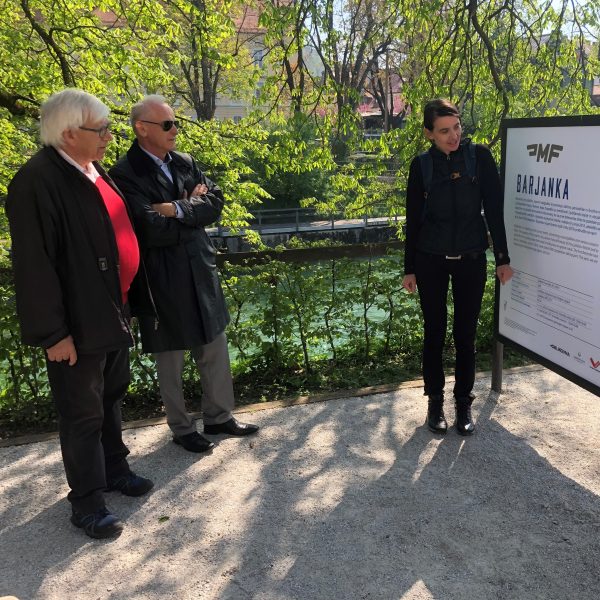
Yesterday, the lobby of Križanke hosted the opening of the Exhibition Barjanka which with the exhibited photographs brings back memories of last year’s premiere edition of the recreational cycling marathon course of the Marathon Franja BTC City and at the same time invites even more participants to join this picturesque cycling event. The exhibition is a result of the cooperation among the Cycling Association KD Rog, the BTC Company, the Ljubljana Marshes municipalities, Ljubljana Tourism, and the Secondary School for Design and Photography Ljubljana (SŠOF), intertwining sports, tourism, nature, culture, and education. The exhibition will be open for public until 15th May on the embankment Krakovski nasip.
At the opening, guests were greeted with speeches by editor of the exhibition, Maša Bratina, principal of SŠOF, Gregor Markelj, director of Public Institute KP Ljubljana Marshes, Janez Kastelic, vice-mayor of the City Municipality of Ljubljana, Aleš Čerin, and Jože Mermal, president of Marathon Franja BTC City Organising Committee and president of the BTC Company Management Board. Following the introductory part of the event, together with the guests they took a stroll along the embankment Krakovski nasip to visit the exhibition. The boards on the embankment present photographs from the last year’s recreational cycling marathon Barjanka, some motifs of the Ljubljana Marshes landscape and sights, as well as suggestions for the Barjanka medals, designed by secondary school students from SŠOF.
The templates for the Barjanka medals were made on the proposal of KD Rog director, Gorazd Penko, at SŠOF. The representatives of the Ljubljana Marshes Nature Park have presented the Ljubljana Marshes to the students of the said school; under the mentorship of their professors, Damijan Kracina, Iris Skubin, and Nina Šušteršič Remic, the students then sketched and made templates for medals from different materials. They were very creative in incorporating the Ljubljana Marshes motifs – the typical mosaic landscape, typical animal and plant species, and precious archaeological findings – in their ideas. The representatives of the Ljubljana Marshes Nature Park were delighted with the students’ products so much that they wanted to present them to the public and include them in the exhibition.
About Barjanka
The idea of Barjanka was born in the Cycling Association KD Rog and was implemented in cooperation with the Ljubljana Marshes Nature Park and the local communities. A 83-kilometre long amateur cyclist event extends across seven municipalities, touching the Ljubljana Marshes area, and is part of the largest cycling event in Slovenia – Marathon Franja BTC City. The Barjanka cyclists discover the varied mosaic of meadows, fields, and watercourses of the Ljubljana Marshes. At the three refreshment points, cyclists can get to know the tastes of the Ljubljana Marshes and the rich cultural and natural heritage of the area. The Barjanka course concludes in BTC City Ljubljana, where each participant receives a medal. The designer of the Barjanka medal, Manca Mravlja, in her template captured the cogwheel, together with a False Ringlet butterfly in a meadow – a distinctive feature of the Ljubljana Marshes. In this way, the medal in a picturesque manner symbolises the fragility of the Ljubljana Marshes and at the same time calls for proper management and visiting of this area.
About Ljubljana Marshes
A large portion of Ljubljana locals is not even aware of what is right at the threshold of their city. Those who have heard about the Ljubljana Marshes only from the news, weather forecast, or when passing the area by car, probably know it best for the floods, fog, and plains with rare lines of trees and solitary hills. Yet, there is much more to the Ljubljana Marshes. This is a special area which is home to numerous treasures of natural and cultural heritage. This is why in 2008 this area became protected as the Ljubljana Marshes Nature Park. In 2011, the pile dwellings in Ig, together with other pile dwellings around the Alps, were proclaimed as world cultural heritage ¬– UNESCO’s Prehistoric Pile Dwellings around the Alps. Yet, this is not the only reason why the Ljubljana Marshes are protected ¬– not only due to the biodiversity of flora and fauna and rich archaeological findings, but also in order to protect humanity. A well-protected nature reflects in a healthy living environment, fresh and clean air, uncontaminated water sources, and soil. Therefore, it is of utmost importance to be well aware of the significance of this area and of the ways of managing and visiting it properly. The best way to visit the Ljubljana Marshes is on foot, by boat, or by bicycle.
Opening of Exhibition Barjanka
PHOTO: Damijan Kracina







